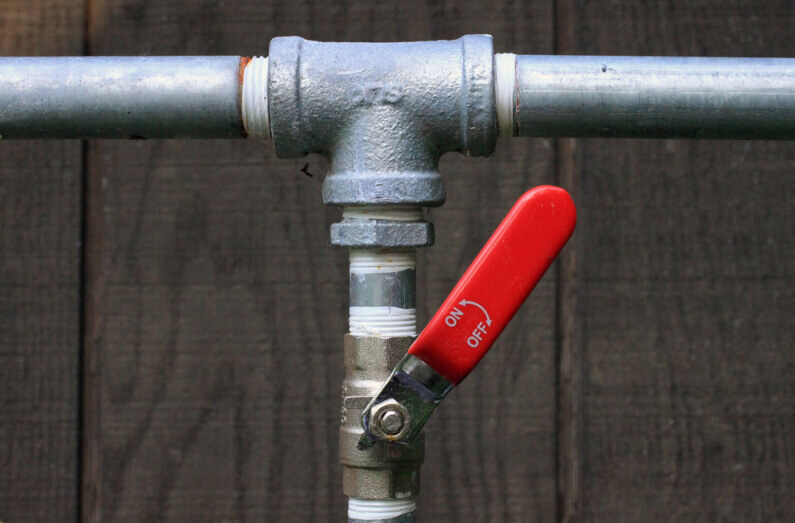Do you live in an older home and you’re concerned about the quality of your pipes and plumbing?
Older homes require many updates and repairs to keep them safe. And while it might seem overwhelming to consider the possible updates that your home needs, it’s important to understand the risks that some of these issues pose.
Galvanized pipes are common in homes that are at least 40 years old. The problem with these pipes is that they’ve undergone decades of potential corrosion. Which can cause lots of issues for your home and your health.
Here’s what you need to know about galvanized pipes and why you might want to consider having them replaced:
What Are Galvanized Pipes?
Galvanized pipes are pipes made out of steel and coated in zinc in an effort to prevent rusting and corrosion. They are commonplace in older homes, particularly those that are 40 years old or older.
Although the outside of these pipes have usually been coated to protect against rust, there is more to consider. As the inside of the pipes usually rust and corrode eventually, especially after many years of water exposure.
This build-up of rust is not great news for the integrity of your home’s plumbing system or for the health of your water.
Keep an Eye Out for Signs of Trouble
If your home is more than 40 years old, make it an annual habit to look at some of your exposed pipes. You can check in the basement, in crawlspaces, or in utility rooms.
The goal is to look for telltale signs of trouble. Check the pipes for discoloration, stains, flaking, or dents. These are all indicators of corrosion. If you notice any of these signs, it’s time to call a professional.
It’s also a good idea to check for any leaks, however small, when you’re checking your pipes. Even the smallest leak can turn into a big problem.
Health Issues Caused by Corroding Galvanized Pipes
As galvanized pipes age, the zinc coating on the exterior of the pipes breaks down and erodes away. As the pipes corrode, lead can build up and the presence of lead within the home presents a danger.
If you’re consuming a lot of water from old, galvanized pipes, there’s also a chance that you’re taking in a significant level of cadmium. Ingested traces of lead and cadmium can harm your health and make you feel ill.
If not replaced, galvanized plumbing can pose a serious health hazard to all the inhabitants of the home.
Plumbing Problems
Not only do galvanized pipes pose a potential health hazard to yourself and your family, but a headache and financial issue as well.
As your pipes break down, the water pressure in your home will suffer. You might begin to notice that you can hardly get any water pressure in some areas of your home at all or much less pressure at best.
Some taps in the home might have more pressure than others, and this is due to inconsistent erosion.
You might also notice that your pipes are producing water tinted with a brownish or reddish hue. This is due to rust residue coming out through your faucets.
Untreated erosion can eventually lead to serious leaks in your pipes which in turn can spell serious water damage to your walls, ceilings, floor, furniture, and so on.
This is why it’s so important to get your galvanized pipes replaced as soon as possible. Though you might not want to be bothered with the cost and hassle of having your pipes replaced, it will cost you a lot less time and money than water damage repairs.
How Can I Tell if I Have Galvanized Pipes in My Home?
Ok, so now that you know some of the dangers of not replacing your galvanized pipes, how do you know if you even have them in your home to begin with?
Start by examining the area where your pipes enter into your home and find the attached waterline. With the use of a screwdriver and a magnet, you’ll be able to figure out what your pipes are made out of.
Scratch the surface of your pipes with your screwdriver and note the underlying color. If you notice copper coming through, then you can be certain your pipes are made out of copper. Also, a magnet won’t stick to copper pipes.
If your pipes are white and capped off in some places, and if a magnet doesn’t stick to them, you’ll know you have plastic pipes.
However, if when you scratch the surface of your pipes and notices a greyish, silverish color underneath the coating, and a magnet does stick to them, you’ll know that your pipes are made out of galvanized steel.
Be aware that if you pipe scratches very easily and is grey in color and a magnet does not stick, you’re likely dealing with lead pipes. These should also be replaced as quickly as possible.
Contact a Professional Plumber Today!
Hopefully, this article has helped you realize the importance of replacing your galvanized pipes as soon as possible. We invite you to check out Plumb Time Plumbing and learn more about our business and how we can be of service to you.
We’ve helped countless customers replace and repair their pipes and in so doing, avoid potential disaster. We’re here to do the same for you.
Contact us with any questions or to set up a service appointment. We look forward to serving you!










